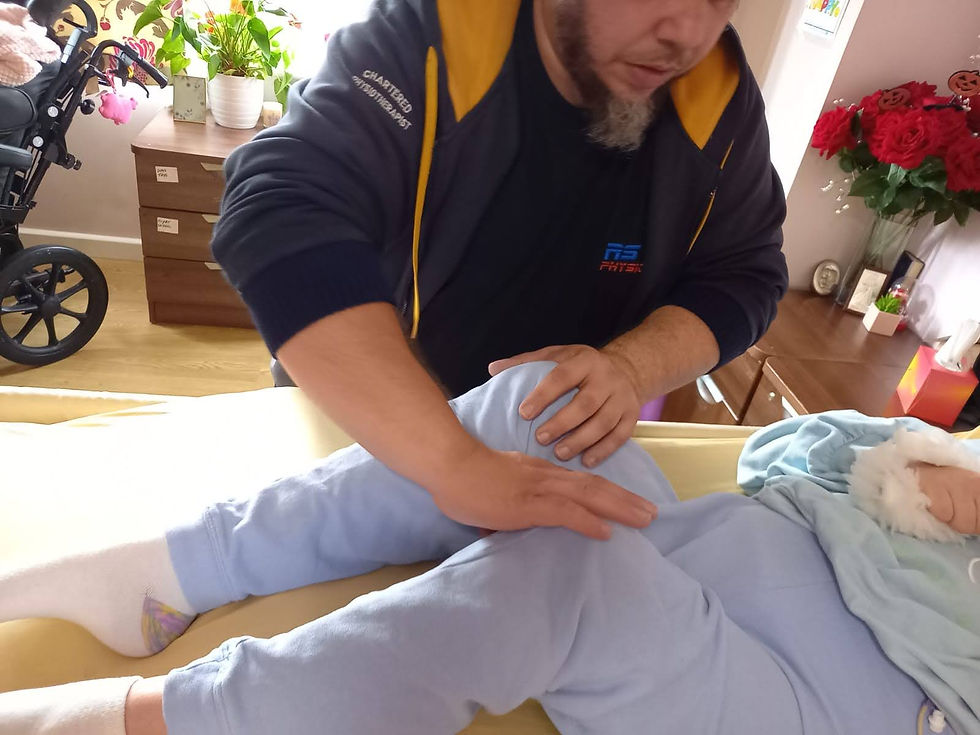Unraveling the Enigma of Tarlov Cysts: Shedding Light on an Underdiagnosed Spinal Condition
- Pawel Ciecierski MSc Physiotherapy MCSP HCPCreg

- May 28, 2023
- 3 min read
Updated: Jun 5, 2023

I recently encountered a rare and underdiagnosed spinal condition called Tarlov cysts. That was as usual accidental find. These intriguing sac-like formations filled with cerebrospinal fluid have piqued my interest due to their potential impact on patient's well-being. Join me as we delve into the world of Tarlov cysts, exploring their prevalence, symptoms, and implications for treatment. Enigma of Tarlov Cysts!
Tarlov Cysts Unveiled:
Tarlov cysts, also known as meningeal diverticula, are abnormal fluid-filled sacs that develop on the spinal nerve roots. These cysts, named after Dr. Isadore M. Tarlov who first described them in 1938, are most commonly found in the sacral region near the base of the spine. While these cysts are rare, studies suggest that they may be more prevalent than previously recognized. Surprisingly, small and symptom-free Tarlov cysts are believed to be present in approximately 5 to 9 percent of the general population. It's intriguing to think that these fluid-filled sacs can quietly exist within a significant portion of individuals without causing any noticeable issues. On the other hand, larger cysts that result in symptoms are relatively uncommon occurrences.
The Hidden Burden:
Tarlov cysts often go unnoticed, as they are typically discovered incidentally during diagnostic imaging for unrelated conditions. However, these cysts can potentially cause debilitating symptoms that significantly impact patients' daily lives. Chronic pain, nerve pain and weakness (radiculopathy), as well as bladder and bowel dysfunction, sexual dysfunctions are among the most commonly reported symptoms.
Unraveling the Mystery:
The precise cause of Tarlov cysts remains a mystery, and ongoing research is shedding light on their underlying mechanisms. It is believed that congenital or acquired weaknesses in the protective covering of the nerve roots may contribute to their formation. Other factors, such as trauma, hormonal changes, and increased spinal pressure, are also being investigated for their potential role.
Diagnosis and Management:
Diagnosing Tarlov cysts can be challenging, as their symptoms often mimic other spinal conditions. Magnetic resonance imaging (MRI) is the primary diagnostic tool for visualizing the presence, size, and location of these cysts.
Treatment options depend on the severity of symptoms and may include conservative approaches, such as pain management techniques and physical therapy. In more severe cases, surgical intervention may be considered to address the cysts.
Shedding Light on the Underdiagnosed:
Tarlov cysts are an underdiagnosed condition, making it crucial for healthcare professionals to be aware of their existence and potential impact on patients' lives. As physiotherapists, we play a vital role in recognizing and managing these cysts, ensuring appropriate referrals for further evaluation and treatment.
And at the end - Conclusion:
Tarlov cysts represent a fascinating yet underdiagnosed spinal condition that can significantly impact patients' well-being. With increasing awareness, improved diagnostic techniques, and multidisciplinary collaboration, we can enhance early detection, tailored treatment plans, and ultimately improve the quality of life for those affected by Tarlov cysts.
Let me know if you had a diagnosed Turlov's and what was your journey with getting it under control?
References:
1. Barakat S, Duntze J, Seizeur R, Labreuche J, Drapier S, Delmaire C, Leclerc X, Pruvo JP, Lejeune JP. Tarlov cysts: clinical evaluation of an innovative surgical technique for root sleeve preservation with a minimum 2-year follow-up. Neurosurg Rev. 2018;41(3):947-953. doi: 10.1007/s10143-017-0919-7
2. Potts MB, McGrath MH, Chin CT, Garcia RM, Weinstein PR. Sacral meningeal cysts: a systematic review and management algorithm. Neurosurg Focus. 2016;41(3):E6. doi: 10.3171/2016.6.FOCUS16162
3. Tarlov IM. Spinal per
ineurial and meningeal cysts. J Neurol Neurosurg Psychiatry. 1970;33(6):833-43. doi: 10.1136/jnnp.33.6.833
4. Yamauchi T, Sakuma T, Yamaguchi S, et al. Prevalence of Tarlov cysts in Japan: results of a large-scale magnetic resonance imaging study. J Neurosurg Spine. 2016;25(3):430-435. doi: 10.3171/2015.12.SPINE151222





Comments